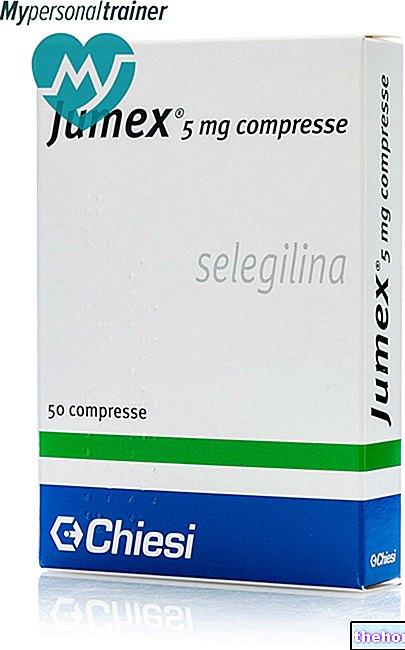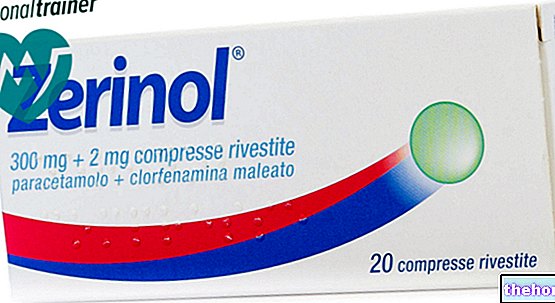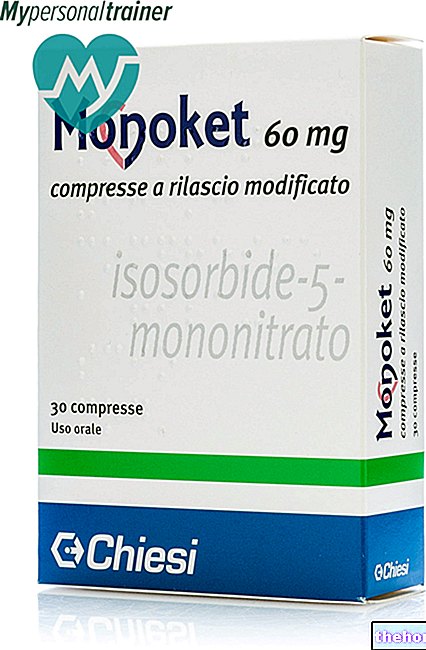Active ingredients: Diflucortolone (diflucortolone valerate), Isoconazole (isoconazole nitrate)
TRAVOCORT 0.1% + 1% cream
Indications Why is Travocort used? What is it for?
Pharmacotherapeutic group
Topical antifungal.
Therapeutic indications
Superficial mycoses of the skin (dermatophytias, candidiasis, pityriasis versicolor) glabrous or covered with hair
Due to the presence of diflucortolone valerate, Travocort is particularly suitable for the treatment of mycoses that present skin manifestations of a decidedly inflammatory or eczematous nature
Contraindications When Travocort should not be used
Hypersensitivity to the active substances or to any of the excipients. Presence in the area to be treated of tuberculous, luetic and viral lesions (chicken pox, herpes zoster), rosacea, perioral dermatitis and skin reactions to vaccinations
Precautions for use What you need to know before you take Travocort
In pregnant women and in very early childhood, the product should be administered in cases of real need and under direct medical supervision (see "Pregnancy and breastfeeding").
Prolonged use of the product can favor the development of microorganisms that are not sensitive to the chemotherapeutic agent present in the preparation itself. In this case, appropriate therapeutic measures must be adopted.
In case of application to the face, avoid that the preparation comes into contact with the eyes.
Interactions Which drugs or foods may change the effect of Travocort
Tell your doctor or pharmacist if you have recently taken any other medicines, even those without a prescription.
Warnings It is important to know that:
The use of topical glucocorticoids on large body surfaces or for prolonged periods of time, particularly under occlusive dressing, may increase the risk of systemic side effects.
As is known for systemic glucocorticoids, even with the use of topical glucocorticoids the onset of glaucoma is possible (eg after use in excessive doses or on large areas for prolonged periods, with occlusive bandaging techniques or after "application to the skin around the eyes).
If Travocort is applied to the genital region, the excipients liquid paraffin and white petroleum jelly can reduce the resistance of latex products such as condoms and diaphragms used at the same time, thus compromising their safety.
Normal hygiene rules are essential for successful treatment with Travocort.
To avoid new infections it is necessary:
- daily change and sterilize by boiling underwear and towels, which should preferably be cotton;
- dry the area between the fingers thoroughly after washing;
- change socks and stockings daily. The use, especially if prolonged, of products for topical use can give rise to sensitization phenomena. In this case, treatment must be interrupted and appropriate therapy instituted. Important information on some excipients This medicine contains cetostearyl alcohol therefore it can cause local skin reactions (e.g. contact dermatitis).
Pregnancy and breastfeeding
Ask your doctor or pharmacist for advice before taking any medicine.
Pregnancy
In general, the use of topical preparations containing glucocorticoids should be avoided during the first trimester of pregnancy. In particular, treatment of large areas, prolonged use or occlusive dressing should be avoided during pregnancy. Epidemiological studies suggest that there may be an increased risk of cleft palate in neonates from women treated with systemic corticosteroids during the first trimester of pregnancy.
The clinical indications for treatment with Travocort during pregnancy should be carefully reviewed and the benefit / risk ratio assessed.
Feeding time
Breastfeeding women should not be treated on the breasts. In particular, treatment of large areas, prolonged use or occlusive dressing should be avoided during breastfeeding. The clinical indications for treatment with Travocort during lactation should be carefully reviewed and the benefit / risk ratio assessed.
- Effects on ability to drive and use machines
There was no effect on the ability to drive and use machines in patients treated with Travocort.
Dose, Method and Time of Administration How to use Travocort: Posology
Unless otherwise prescribed by a doctor, the dosage of Travocort is 2 applications per day. In case of interdigital mycosis it is often advisable to insert a gauze pad soaked in Travocort between the fingers.
After the remission of the inflammatory and eczematous skin manifestations or at the latest after 1 week of treatment it is advisable not to continue the application of Travocort but to continue, if necessary, with the simple antifungal or with the corticosteroid alone.
If you have any questions about the use of Travocort, ask your doctor or pharmacist
Overdose What to do if you have taken too much Travocort
The results of the acute toxicity studies did not indicate any risk of acute intoxication following a single skin application of an excessive amount (application over a large surface in conditions favoring absorption) or accidental ingestion.
Side Effects What are the side effects of Travocort
Like all medicines, Travocort can cause side effects, although not everybody gets them.
In the course of the treatment of large body areas (about 10% and more of the total skin surface) and in prolonged use (beyond 4 weeks), it cannot be excluded, as for other topical corticosteroid preparations, the " onset of side effects related to corticosteroid absorption.
Skin atrophy, hypertrichosis, hypopigmentation, striae, telangiectasias, burning sensation, irritation, folliculitis can occur locally.
Compliance with the instructions contained in the package leaflet reduces the risk of undesirable effects.
Reporting of side effects
If you get any side effects, talk to your doctor or pharmacist. This includes any possible side effects not listed in this leaflet.
Undesirable effects can also be reported directly via the national reporting system at https://www.aifa.gov.it/content/segnalazioni-reazioni-avverse. safety of this medicine
Expiry and Retention
Expiration:
see the expiry date printed on the package.
The expiry date refers to the product in intact packaging, correctly stored.
Warning: do not use the medicine after the expiry date shown on the package.
Do not store above 25 ° C.
Medicines should not be disposed of via wastewater or household waste.
Ask your pharmacist how to throw away medicines you no longer use. This will help protect the environment. Keep this medicine out of the sight and reach of children.
- Composition
1 g of Travocort contains:
1 mg (0.1%) of diflucortolone-21-valerate, 10 mg (1%) of isoconazole nitrate.
Excipients: polyethylene glycol sorbitanstearate, sorbitan stearate, cetostearyl alcohol, white petroleum jelly, liquid paraffin, disodium edetate dihydrate and purified water.
- Pharmaceutical form and content
Cream, 20 g tube
Source Package Leaflet: AIFA (Italian Medicines Agency). Content published in January 2016. The information present may not be up-to-date.
To have access to the most up-to-date version, it is advisable to access the AIFA (Italian Medicines Agency) website. Disclaimer and useful information.
01.0 NAME OF THE MEDICINAL PRODUCT
TRAVOCORT CREAM
02.0 QUALITATIVE AND QUANTITATIVE COMPOSITION
1 g of Travocort contains: 1 mg (0.1%) of diflucortolone-21-valerate, 10 mg (1%) of isoconazole nitrate.
Excipients with known effects: cetostearyl alcohol.
For the full list of excipients, see section 6.1.
03.0 PHARMACEUTICAL FORM
Cream for skin use.
04.0 CLINICAL INFORMATION
04.1 Therapeutic indications
Superficial mycoses (dermatophytias, candidiasis, pityriasis versicolor) of hairless or hair-covered skin. Due to the presence of diflucortolone valerate, Travocort is particularly suitable for the treatment of mycoses that present skin manifestations of a decidedly inflammatory or eczematous nature.
04.2 Posology and method of administration
Unless otherwise prescribed by a doctor, the dosage of Travocort is 2 applications per day. In case of interdigital mycosis it is often advisable to insert a gauze compress impregnated with Travocort between the fingers. After the remission of the inflammatory and eczematous skin manifestations or at the latest after 1 week of treatment it is advisable not to continue the application of Travocort but to continue, if necessary, with the simple antifungal or with the corticosteroid alone.
04.3 Contraindications
Hypersensitivity to the active substances or to any of the excipients listed in section 6.1.
Presence in the area to be treated of tuberculous, luetic and viral lesions (chicken pox, herpes zoster), rosacea, perioral dermatitis and skin reactions to vaccinations.
04.4 Special warnings and appropriate precautions for use
In case of application to the face, avoid that the preparation comes into contact with the eyes.
The use of topical glucocorticoids on large body surfaces or for prolonged periods of time, particularly under occlusive dressing, may increase the risk of systemic side effects.
As is known for systemic glucocorticoids, even with the use of topical glucocorticoids the onset of glaucoma is possible (eg after use in excessive doses or on large areas for prolonged periods, with occlusive bandaging techniques or after "application to the skin around the eyes).
The physician must inform the patient about the hygiene measures to be taken during treatment.
If Travocort is applied to the genital region, the excipients liquid paraffin and white petroleum jelly can reduce the resistance of latex products such as condoms and diaphragms used at the same time, thus compromising their safety.
Prolonged use of the product can favor the development of microorganisms that are not sensitive to the chemotherapeutic agent present in the preparation itself. In this case, appropriate therapeutic measures must be adopted. The use, especially if prolonged, of topical products can give rise to phenomena of awareness raising. In this case, treatment must be interrupted and appropriate therapy instituted.
Important information about some of the excipients
This medicinal product contains cetostearyl alcohol therefore may cause local skin reactions (e.g. contact dermatitis).
04.5 Interactions with other medicinal products and other forms of interaction
No interaction studies have been conducted.
04.6 Pregnancy and breastfeeding
Pregnancy
In pregnant women and in very early childhood, the product should be administered in cases of real need and under the direct supervision of the doctor.
In general, the use of topical preparations containing glucocorticoids should be avoided during the first trimester of pregnancy. In particular, treatment of large areas, prolonged use or occlusive dressing should be avoided during pregnancy.
Epidemiological studies suggest that there may be an increased risk of cleft palate in neonates from women treated with systemic corticosteroids during the first trimester of pregnancy.
The clinical indications for treatment with Travocort during pregnancy should be carefully reviewed and the benefit / risk ratio assessed.
Feeding time
Breastfeeding women should not be treated on the breasts.
In particular, treatment of large areas, prolonged use or occlusive dressing should be avoided during breastfeeding.
The clinical indications for treatment with Travocort during lactation should be carefully reviewed and the benefit / risk ratio assessed.
04.7 Effects on ability to drive and use machines
There was no effect on the ability to drive and use machines in patients treated with Travocort.
04.8 Undesirable effects
In the course of the treatment of large body areas (about 10% and more of the total skin surface) and in prolonged use (beyond 4 weeks), it cannot be excluded, as for other topical preparations based on corticosteroids, the " onset of side effects related to corticosteroid absorption. Skin atrophy, hypertrichosis, hypopigmentation, striae, telangiectasias, burning sensation, irritation, folliculitis can occur locally.
Reporting of suspected adverse reactions
Reporting of suspected adverse reactions occurring after authorization of the medicinal product is important as it allows continuous monitoring of the benefit / risk balance of the medicinal product. Healthcare professionals are asked to report any suspected adverse reactions via the national reporting system. "address http://www.agenziafarmaco.gov.it/it/responsabili.
04.9 Overdose
The results of acute toxicity studies did not indicate any risk of acute poisoning following a single skin application of an excessive amount (application over a large surface under conditions favoring absorption) or accidental ingestion.
05.0 PHARMACOLOGICAL PROPERTIES
05.1 Pharmacodynamic properties
Pharmacotherapeutic group: imidazole and triazole derivatives, combinations.
ATC: D01AC20.
Travocort contains the broad spectrum imidazole antifungal, 1% isoconazole nitrate and the corticosteroid anti-inflammatory drug, 0.1% diflucortolone valerate.
Isoconazole nitrate is an antifungal that can be used in the treatment of superficial cutaneous mycoses. Thanks to its broad spectrum of action, Travocort is active on dermatophytes, yeasts, fungi of the "pseudolieviti" type, molds and microorganisms responsible for pityriasis versicolor and erythrasma.
The isoconazole nitrate in the serial dilution test showed unaltered its spectrum of action against dermatophytes, yeasts, pseudolytes, molds, Gram positive bacteria even after the addition of diflucortolone valerate in the ratio 10: 1 corresponding to that of "Association. On the other hand, the addition of isoconazole nitrate did not compromise the anti-inflammatory and vasoconstrictive properties of diflucortolone valerate (rat ear test and Wells experimental design).
Diflucortolone-21-valerate inhibits inflammation in inflammatory and allergic skin diseases and relieves subjective disorders such as itching, burning and pain.
05.2 Pharmacokinetic properties
The cutaneous application of the association allows a greater permanence in the tissue of the isoconazole nitrate at the level of the upper layers of the epidermis probably due to the vasoconstrictive action of diflucortolone valerate. The latter, on the other hand, is not influenced by the antifungal and the intracutaneous concentration it is prevalent in the more superficial layers. The absorption of the single components of the association is less than 1% and both are rapidly and completely metabolized. After i.v. administration isoconazole nitrate has a plasma half-life of 2.65 ± 0.21 hours: diflucortolone valerate of approximately 4 hours. The urinary and faecal elimination is in the ratio 1: 2 for isoconazole nitrate and 3: 1 for diflucortolone valerate.
05.3 Preclinical safety data
The LD50 following intragastric administration of the combination preparation in rats was equal to 36 g / kg. Systemic corticoid effects, after daily application of the preparation for 12 weeks in dogs, occurred only when doses of 100 mg / were exceeded. kg / day by topical route During daily application for 4 weeks on intact and scarified skin of dogs and rabbits, no local lesions were found apart from modest irritative manifestations.
06.0 PHARMACEUTICAL INFORMATION
06.1 Excipients
Polyethylene glycol-sorbitanstearate, sorbitan stearate, cetostearyl alcohol, white petroleum jelly, liquid paraffin, disodium edetate dihydrate, purified water.
06.2 Incompatibility
Not known.
06.3 Period of validity
3 years.
06.4 Special precautions for storage
Do not store above 25 ° C.
06.5 Nature of the immediate packaging and contents of the package
Flexible aluminum tube internally protected by a layer of heraldite.
Packaging: tube with 20 g of cream.
06.6 Instructions for use and handling
No special instructions.
07.0 MARKETING AUTHORIZATION HOLDER
Bayer S.p.A. - Viale Certosa, 130 - 20156 Milan
08.0 MARKETING AUTHORIZATION NUMBER
A.I.C. No. 025371016
09.0 DATE OF FIRST AUTHORIZATION OR RENEWAL OF THE AUTHORIZATION
09.11.1984/01.06.2010.
10.0 DATE OF REVISION OF THE TEXT
AIFA determination: August 2014.




























